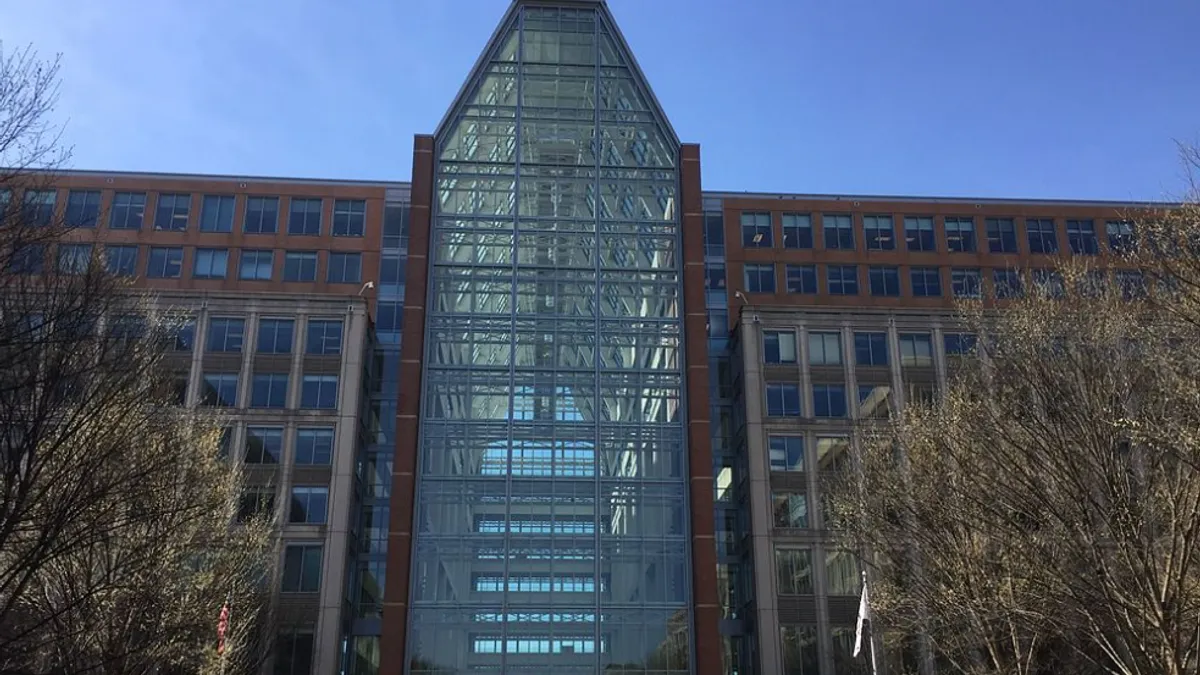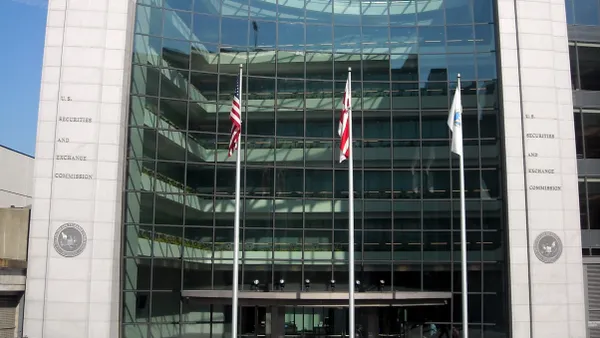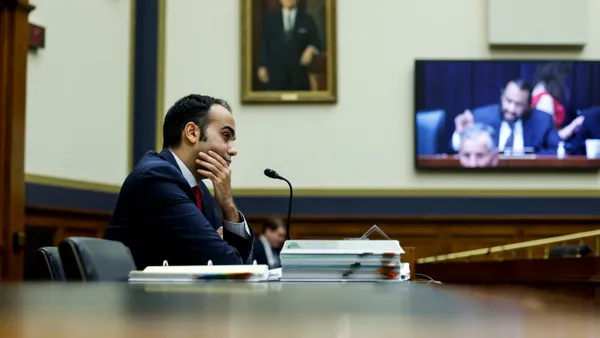Dive Brief:
- The trial board created a decade ago to speed up patent cases appears to be in the grip of management meddling, causing many of the judges to question how independent they are, a preliminary review by the Government Accountability Office (GAO) suggests.
- Three-fourths of judges on the Patent Trial and Appeal Board (PTAB) say the director of the U.S. Patent and Trademark Office (USPTO) and the management of PTAB exert influence over their decisions, directly in some cases and indirectly in others. And two-thirds say they’ve felt pressure to change decisions as a result of director or management influence.
- “Oversight … has generally increased over time,” Candice Wright, GAO director of science, technology assessment and analytics, told a House Judiciary subcommittee last week.
Dive Insight:
USPTO and PTAB management have had a role reviewing judge’s patent decisions since the trial board was created as part of the America Invents Act (AIA) in 2011.
What appears to be changing is a ramping up of the review processes.
“Some prior USPTO directors — and subsequently PTAB management — have been hands-off while others have been very involved in oversight of PTAB decisions,” Wright says.

Avenues for review
Oversight of decisions over the years tended to come from an AIA Review Committee, a voluntary panel of judges that looks at how decisions differ from precedent, statute and case law, and recommend changes. The review panel earlier this year was replaced with an updated version, called the Circulation Judge Pool, although rules still need to be written for the new body.
Management has had a role in reviews, too, through the use of senior judges who step in to help ensure decisions that touch on new and important legal areas are consistent with previous PTAB decisions.
And the USPTO director influences matters by swapping out who sits on, or otherwise making changes to, the panels that hear cases.
Arthrex decision
In a big change last year, oversight became more institutionalized with a U.S. Supreme Court decision in U.S. vs. Arthrex, which found PTAB judges, given the nature of the decisions they make, should be more accountable to the congressionally appointed officer who oversees them, the USPTO director.
The decision has led to a more formal director oversight role, contributing to concern among some judges that the authority is creating an opaque process for changing judge-made decisions.
“Some judges described Management Review as a ‘black box’ with little transparency into what happens between the time they submit their draft decision for review and when they receive comments,” Wright says. “Many judges we interviewed expressed uncertainty, for example, as to who in management is reviewing the decisions, the timing of reviews, the extent to which judges can converse with management about the comments, what criteria management use in reviews, and what role, if any, USPTO directors play in approving these comments.”
Some judges say they’re changing their behavior as a result of being second-guessed.
“[Management Review’s] very existence ... creates a preemptive chilling effect,” one judge told GAO. Another said it leaves a “bad taste” that permeates into decision-making even on cases that aren’t subject to review.
Ongoing investigation
In her testimony, Wright said the GAO review isn’t complete and the findings so far are preliminary, so concerns raised by judges don’t necessarily reflect what the review will end up concluding.
“My statement today is based on our ongoing examination of the practices used to oversee decision-making at PTAB,” Wright says. “Views expressed … are those of the judges’ [during this review so far] and may not be representative of all judges’ views.”











